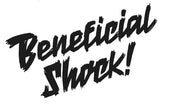Zara Wilkins graduated from University in 2019 and soon after returned to her home in Brighton to live and work by the sea. She dreams up narratives, and responds to stories by pushing them through a projective pixelated visual lens. Here she discusses her influences, challenges and thoughts on what, in her opinion, makes for a good illustrator.
Could you define the style/approach of your work?
The first time I got inspired to make rug designs was when I went to one of Grayson Perry’s exhibitions where he had made tapestries inspired by Afghan War rugs. After this I researched into the War rugs and looked at other rugs from around the world and started to experiment with pixels which represent each stitch in the design. For some reason there’s something about pixels that just does it for me. I think because I am a bit of a perfectionist, making everything align is really satisfying.
I grew up playing Minecraft where worlds are made up of cubes. I also did mosaics and knitting with my nan which are essentially lots of squares all put together to make a design. And do you remember those plastic bead things that you’d iron and they’d all stick together? I reckon doing all of these things early on in life tuned my brain to working in squares.
I’m not sure that I can claim my work to be ‘pixel art’. I prefer not to label it as that, as the work I make is a little different in theme and style. Though I do take inspiration from pixel based art like old video games and have been involved in making a few games in the past!

Which piece of work or project have you learned the most from?
The most significant I think was my most recent work for the Borneo Orangutan rug. For a while it was difficult to work on because in my head there was a fight between what I wanted to do, and what I thought others would like, so it was left unfinished. After a good conversation with my friend Harry Jones who is a painter, I realised I needed to be brave and go with whatever inspires me and radically choose to do what I want to do. This has been a really useful realisation and has made me more inspired.
![]()
Which illustrator alive or dead do you most admire and why?
Joohee Yoon. The sense of freedom in her illustrations is inspiring, especially to
someone who can over think their work like me! She gets the perfect balance of
fearlessness and care in her illustrations. This is an amazing skill and something that I would really like to work on over the next few years.
(see Joohee's work here)
What is the most challenging aspect for you of being a ‘jobbing illustrator
For me, business work and personal work often get tangled and I get in the trap of thinking everything I do needs to be ‘worth’ something. That it will somehow get me more followers, go into my portfolio, get me a job, earn money or get my work into an exhibition. These aspirations are all fine, but when art just becomes about ‘what will this amount to’ and not enjoying the process for the sake of it, all the life gets sucked out of it and you then don’t end up doing anything, whether that’s personal work or professional work. I have realised how important it is to make work ‘just because’. Art is my passion not just my job and I need to respectfully remind myself of that on a regular basis.
Who would be your ideal client to work for and why?
I feel like every artist dreams of having a super rich and enthusiastic patron that pays for any and all projects you could ever wish to do. But for most of us this remains a dream. The ideal client to work for would really be someone who has a good heart, and where we can enjoy the creative journey together.
What do you think defines ‘good illustration’?
Anyone who approaches their art with authenticity, fearlessness and a sense of fun and interest. Their illustrations will have a quality to them that will be attractive even if it is not your taste.
Illustration does go through fashions and people have particular tastes at different times, but I don’t think creating one good image makes you a good illustrator. Being a good illustrator is knowing how to be sustainable in your practice. It’s like yoga, just because you can do a head stand it doesn’t mean you’re a ‘good yogi’. You get ‘good’ not just because of what you can do, but how and why. The ‘how and why’ brings the richness and the depth.

"Being a good illustrator is knowing how to be sustainable in your practice. It’s like yoga, just because you can do a head stand it doesn’t mean you’re a ‘good yogi’. You get ‘good’ not just because of what you can do, but how and why. The ‘how and why’ brings the richness and the depth."
If you weren’t an illustrator what would you be?
Because I’m quite a multi-media sort of person I refer to myself as an artist, but if I took illustration out of the mix, I would replace it with making clothes and toys more often.
What actor/actress would play you in a film about your life and what would the name of that film be?
Title: “Just Be Yourself”
Actor: Someone new or less well known that hasn’t really been seen before.
What was the last film that made you cry (in sadness or in laughter)?
Pretty sure it was My Octopus Teacher!
Zara illustrated the feature 'When the Going Gets Tough...' on women Law Enforcement officers for the new Courage & Strength issue, available now to buy in the shop.

